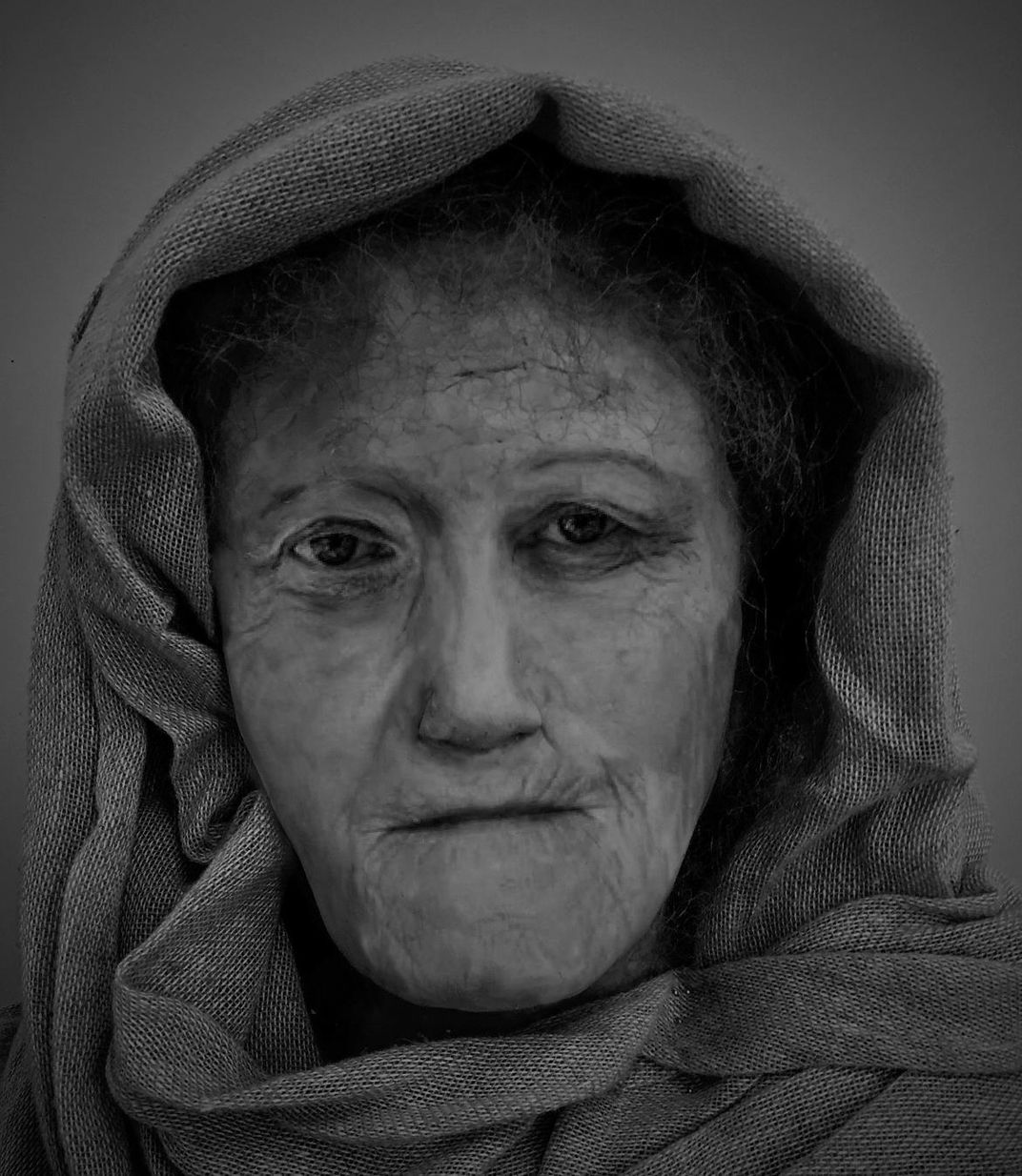See the Face of Hilda, a Toothless Iron Age Druid Woman
A Scottish university student has recreated Hilda’s likeness out of wax
/https://tf-cmsv2-smithsonianmag-media.s3.amazonaws.com/filer/46/8d/468d7777-6400-4f48-b71a-8555b4e34318/1565803309349_1920x1080_thumbnail.jpg)
During the Iron Age, women’s average life expectancy was around 30 years old. But Hilda, a druid woman who lived on Scotland’s Isle of Lewis at some point between 55 B.C. and 400 A.D., died at roughly twice this age, succumbing to unknown forces when well into her 60s.
Thanks to the efforts of a Scottish graduate student, you can now look directly into the face of this long-lived druid. As Gerald Lennon reports for BBC News, Karen Fleming, an Edinburgh native pursuing a master’s in forensic art and facial identification at the University of Dundee, has created a 3-D wax reconstruction of Hilda’s face using data captured by a scan of her skull.
“First I put the facial muscles on and then I had to build up the skin and that starts to build up the actual face,” Fleming tells Lennon. “There’s measurement taken for the skull and the ears and if they have teeth you can measure for the lips.”
Crucially, the graduate student notes in a statement, the state of Hilda’s skull suggests the elderly woman didn’t actually have teeth at the time of her death—a fact Fleming deems not “too surprising considering the diet of folk back then.”
The ancient skull’s first appearance in the historical record dates to 1833, when it was presented to the Phrenological Society of Edinburgh as one of six collectively dubbed the “Druids of the Hebrides.” Today, the skull and its five cranium counterparts reside in the University of Edinburgh’s Anatomical Museum.
According to the press release, researchers have been unable to carbon date Hilda’s skull. If the information provided back in 1833 is accurate, however, then the druid woman died anytime between 55 B.C. and 400 A.D.
“It was impressive how long she lived,” Fleming says, adding that Hilda’s longevity can likely be attributed to a privileged background.

One of the biggest challenges Fleming faced while creating the eerily realistic likeness was the headline-making heatwave that swept through Europe this summer. To keep Hilda’s wax facial features intact, she stored different body parts—for example, the ears—in the fridge. During the commute from Edinburgh to Dundee, Fleming explains, “I often had to keep her cool in the car, strapped up in the passenger seat. I’m sure that’s a sight passers-by won’t forget seeing.”
Per Live Science’s Owen Jarus, the term “druid” typically encompasses a diverse group of learned individuals, including philosophers, teachers, judges, and, on the more mystical end of the spectrum, mediators between humans and the gods. BBC News’ Lennon defines the Celtic word more broadly as a person considered an expert in magic or religion.
Ronald Hutton, a historian at Bristol University and author of The Druids: A History, tells BBC News that a lack of firsthand knowledge makes it difficult to determine what activities a specific reference to druids connotes.
“The problem is knowing what the word actually means in practice,” Hutton says. “Because there are a lot of Celtic languages spoken by a lot of Celtic people from the Iron Age, it can mean all sorts of things, from somebody who's a blacksmith who dabbles in magic on the side … [to] a chieftainess or a member of an elite family."
Given the level of mystery surrounding Hilda’s life and death, Lennon writes that it’s hard to say what role she played within her society.
Fleming, meanwhile, is exhibiting her wax model at the university’s annual Masters Show through August 25.
As the driving force behind Hilda’s semi-resurrection, she concludes, “I think she looks like many older women I’ve met in my life and I’m proud of that.”
/https://tf-cmsv2-smithsonianmag-media.s3.amazonaws.com/accounts/headshot/mellon.png)
/https://tf-cmsv2-smithsonianmag-media.s3.amazonaws.com/accounts/headshot/mellon.png)